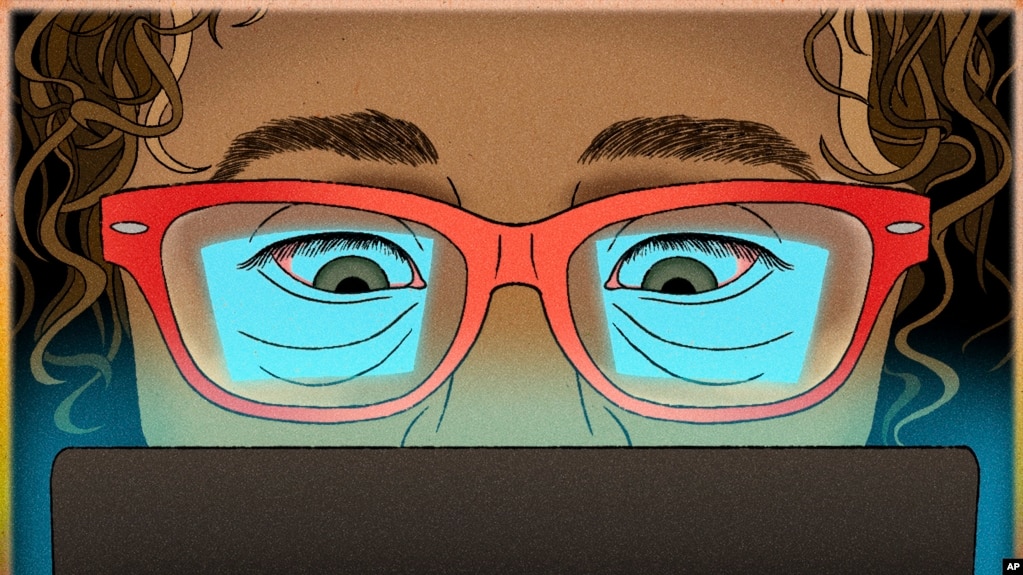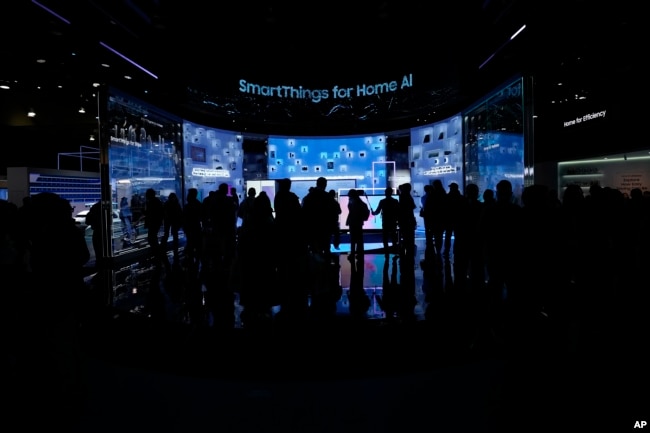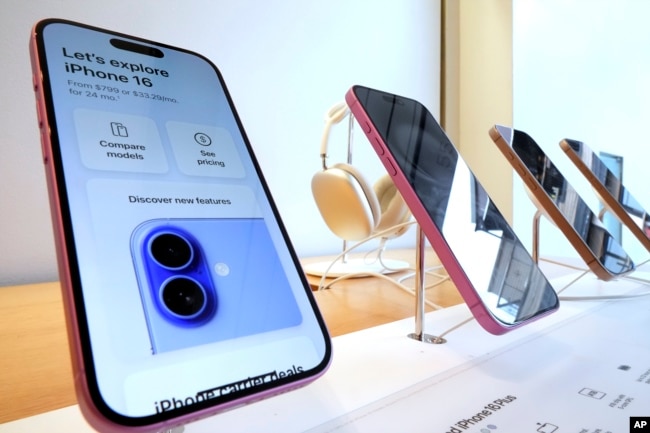AUDIO
Experts Provide Tips for Avoiding Computer-linked Vision Trouble

Computer, or digital, screens are common at work, homes, schools, and stores. An estimated 104 million Americans of working age spend more than seven hours a day in front of screens, the American Optometric Association says. All that screen time can cause harm.
Too much screen viewing can lead to dry or watery eyes, unclear vision and headaches. It can also lead to vision conditions including myopia, or nearsightedness, especially in children. Some technology workers even describe short times of dizziness or vertigo when they look at screens for too long.
However, exposure to blue light from digital screens has not been shown to cause permanent eye damage, the American Academy of Ophthalmology says.

Overworked eyes
One reason for the screen-linked vision problems lies in the eye muscles. Staring closely at screens for long amounts of time can cause the muscle used for eye focus to become too tense, or tight.
“That muscle's not supposed to stay tight all day long. And if it does, it's like picking up a light weight and trying to hold it over your head for hours,” American Optometric Association President Steven Reed told the Associated Press (AP). It is not hard to lift, he said, “But after a while, even though it’s not a heavy lift, your body just gets tired,” he added.
The vision problems can affect work, family time and rest. As an optometrist in Mississippi, Reed sees people who are experiencing eye pain, headaches and unclear vision linked with computer use. He suggests that people with such problems get an eye examination and take regular breaks from screen viewing.
Here are some more tips from eye health professionals to reduce eye strain caused by devices.

Follow the 20-20-20 rule
Take a break every 20 minutes from looking at a computer. During the break, focus your eyes on something that is about 20 feet away (6 meters) for 20 seconds. This will help ease tired, tight eye muscles.
“Luckily, eye strain is temporary,” said Raj Maturi, an eye doctor, or ophthalmologist, at Midwest Eye Institute in Indianapolis and spokesperson for the American Academy of Ophthalmology. “The best way to avoid these symptoms is by taking breaks from our screens or near work activities and using lubricating eye drops, if needed,” he said.
People normally close their eyes very briefly about 18 to 22 times per minute. This helps lubricate the eye naturally. But when looking at a screen, people might close their eyes only three to seven times per minute, the Cleveland Clinic says. That is when use of eye drops might be considered.
Change your desk setup
Some people find that using a larger computer screen helps reduce eye tiredness, or fatigue. You can also increase the image size on your laptop, monitor or smartphone screen.
Sitting an arm’s length away from your screen and looking down at it also can help reduce eye strain, the American Academy of Ophthalmology says.
Product claims
Some products for computer users, such as blue light glasses, are marketed with claims that they will reduce eye strain, improve sleep and prevent eye disease. But several studies have found the glasses are not very effective, says the American Academy of Ophthalmology. The group says it is how people use digital devices that causes problems, not the blue light coming from screens.
Extracurricular optics
Even after stepping away from work on larger computers, many adults find themselves using smaller digital devices for reading or watching shows. And many children use small digital devices such as laptops, tablets, and smartphones in school.
Ayesha Malik of the Children’s Hospital of Philadelphia said that too much screen time or focusing on nearby objects can speed development of nearsightedness, especially in children. She added that anyone watching shows should do so on a television, instead of a tablet, to help avoid eye strain.
Children should follow the 20-20-20-2 rule, she said. The added “2” stands for 2 hours of play outside every day, which helps with eye development, Malik said.
“The reality is that most children are engaging with screens throughout the day at school and home. It becomes difficult to track the total number of hours,” she said. “Aim for not more than 20 minutes during any one session.”
Sleeping soundly
The blue light that digital screens release can increase a person’s alertness, experts say. As a result, their use might make it difficult to fall asleep or sleep well.
To give your eyes and brain the rest they need, doctors suggest turning off screens one to two hours before going to sleep. You can also change the setting on digital devices to lower screen brightness. If you are used to watching videos at night, try listening to an audiobook or podcast instead.
_____________________________________________________
Words in This Story
focus – v. to adjust the point of concentration of the eye
optometrist – n. a health care professional who examines and treats the eye for problems
engage – v. to give attention to something, to participate
lubricate – v. to apply something that lessens or prevents difficulty or friction
fatigue – n. tiredness or exhaustion from exertion or stress
progression – n. the action or process of developing (or progressing)
https://learningenglish.voanews.com/a/experts-provide-tips-for-avoiding-computer-linked-vision-trouble/7953508.html